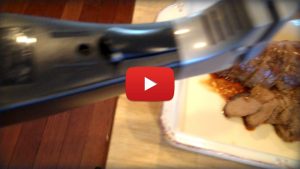 You can spend a lot of money on grilling and BBQ gear especially if you’re getting into competitions… so before you buy here’s a few things you need to know before you buy an electric knife...
You can spend a lot of money on grilling and BBQ gear especially if you’re getting into competitions… so before you buy here’s a few things you need to know before you buy an electric knife...
Black & Decker EK700 9-Inch Electric Carving Knife, White
Cuisinart CEK-40 Electric Knife
Hamilton Beach 74250 Carve ‘n Set Electric Knife with Case, White
Rapala Rechargeable Cordless Electric Fillet Knife
Some are less than twenty bucks so think about the following…
- Cord length… it’s usually our first annoyance – look for a knife that wont force you to purchase an extender.
- Blade length -7 & half inches may not “cut it” when it comes to large turkey… compare the length of the blade – not necessarily the length of the handle.
- Can you remove the blades? That means is it easy to clean? Can you find Replacement blades ?
- Finally – how is the Grip? – Hard to tell online but think about a slick finish…. remember hand could be greasy – and you really want it to be able to lock into the on position?
Top sellers:
Black& Decker EK7009 inch
Hamilton beach
Rival 1250
And Rapala makes a battery rechargeable version for about $100 –
Some competitive cooks that slice through a lot of brisket go cheap and consider them almost as a disposable item replacing often. We’ll put links to a few of the most popular in the notes here and for tips tricks and reviews find what you love at barbecuetricks.com.>See The Electric Knife Video Here
